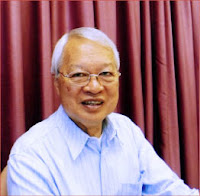[信訊舊文重溫]
聖週:禮儀及靈修的高峰
(三)聖週星期四
----------------------------------------
我母校澳門聖若瑟大學有慶曾邀得著名禮儀學家安鵬浩神父客座,教授禮儀神學一課。我曾在2009/10學年習修該課;並在(二零一零年)三月十日參與由天主教香港教區禮儀委員會主辦,由國際知名的禮儀學家安鵬浩神父所主講的禮儀講座。在即日徵得講者安神父同意後,曾在澳門堂聯《信訊雙週刊》編譯講座主要內客。今天重溫舊文,希望能與大家一同重溫聖週各禮儀行動中更深入的意思,從而度一個更豐碩的聖週。
----------------------------------------
聖週星期四
1. 直到第七世紀,羅馬教會是以在聖週星期四早上由主教主持並有信眾參與的公開悔罪禮來結束四旬期的。他們是早在聖灰星期三就被選出來參與修和的悔罪者。作為懺悔的記號,他們在聖灰星期三被撒上聖灰,並要穿上粗衣麻布。
在第十三世紀,修和儀式更具戲劇性。悔罪者要在教堂外等候,同時總六品執事(編譯按:初期教會由主教任命,協助主教處理事務者。中世紀時,由於權力增大,時有妄用職權之弊,故在特倫多大公會議中予以取消)向主教替他們請救修和。他會向主教唸以下禱文:
「聖父【編譯按:這名銜以往可用於所有主教,但現在一般只保留給羅馬主教──教宗】,懺悔者的修和時間已到。這裏既有聖洗的水,就有懺悔的淚(Lavent aquae, lavant lacrimae;編譯按:字義見將會重刊的另一篇重溫)」。聖洗聖事曾被稱為「首次懺悔」(first penance)或首次皈依。在聖洗聖事中,候洗者橫渡重生之水;透過悔恨的淚水,懺悔者獲得了修和(再次皈依)。
2. 在傍晚時份會舉行另一台彌撒。看來到了第十世紀,這台彌撒紀念最後晚餐。由此三日慶期就壯麗地以紀念上主的晚餐開始。
3. 濯足禮在第五世紀中葉出現於耶路撒冷,在東、西方的其他教會則是從中採用了濯足禮的。到了第七世紀,教宗也開始替梵蒂岡內眾人洗腳,但直到梵二禮儀改革之後才被納入禮儀之中。在濯足禮後教宗會跟貧窮人一同進食:感恩祭滿溢並外流到一餐與貧窮人和邊緣人共同享用的晚飯。
重要的是,要看出感恩祭和濯足禮之間的關係。濯足禮不僅僅是耶穌在最後晚餐所作過的事的戲劇性重演。在沒有記載到建立聖體聖事的《若望福音》中,濯足禮就是感恩祭的具體標記:謙虛的服務。濯足禮是感恩祭的生動標記和圖象。
聖週星期四曾被稱為命令星期四(Maundy Thursday;Maundy是英語借用了拉丁語mandatum〔命令〕)。這是教會回憶起上主在最後晚餐中的命令「你們要這樣做來紀念我」的日子。在《若望福音》中,這命令則以另一道命令來表達「你們要洗彼此的腳」作為相互服務的標記。由此,聖週星期四是命令星期四,就是由於上主的雙重令命:舉行感恩祭和彼此服務。
為了具體地表達濯足禮的意義,教會頓促我們在這一天向貧窮人行善(這是一年中的唯一一天,這道令命會明明白白地在禮儀中說出)。
4. 恭移彌撒中剩下的聖體是一個古老傳統,在第十三世紀當教宗烏班諾四世(Urban IV)引進基督聖體聖血節時才把這項禮節予以隆重化。
5. 卸去祭台布是一個古老傳統,以標誌感恩祭慶典的結束,同樣我們會在一頓莊嚴的晚餐後拿走枱布。今天,卸去祭台布是用來象徵在其受難中基督被剝去衣服,但這就沒有歷史根據了。
在第十三世紀,修和儀式更具戲劇性。悔罪者要在教堂外等候,同時總六品執事(編譯按:初期教會由主教任命,協助主教處理事務者。中世紀時,由於權力增大,時有妄用職權之弊,故在特倫多大公會議中予以取消)向主教替他們請救修和。他會向主教唸以下禱文:
「聖父【編譯按:這名銜以往可用於所有主教,但現在一般只保留給羅馬主教──教宗】,懺悔者的修和時間已到。這裏既有聖洗的水,就有懺悔的淚(Lavent aquae, lavant lacrimae;編譯按:字義見將會重刊的另一篇重溫)」。聖洗聖事曾被稱為「首次懺悔」(first penance)或首次皈依。在聖洗聖事中,候洗者橫渡重生之水;透過悔恨的淚水,懺悔者獲得了修和(再次皈依)。
2. 在傍晚時份會舉行另一台彌撒。看來到了第十世紀,這台彌撒紀念最後晚餐。由此三日慶期就壯麗地以紀念上主的晚餐開始。
3. 濯足禮在第五世紀中葉出現於耶路撒冷,在東、西方的其他教會則是從中採用了濯足禮的。到了第七世紀,教宗也開始替梵蒂岡內眾人洗腳,但直到梵二禮儀改革之後才被納入禮儀之中。在濯足禮後教宗會跟貧窮人一同進食:感恩祭滿溢並外流到一餐與貧窮人和邊緣人共同享用的晚飯。
 |
| 教宗方濟各於二零一六年聖週星期四,在主持彌撒時為穆斯林、東正教徒及天主教徒難民洗腳 (L''Osservatore Romano/Pool Photo via AP) |
重要的是,要看出感恩祭和濯足禮之間的關係。濯足禮不僅僅是耶穌在最後晚餐所作過的事的戲劇性重演。在沒有記載到建立聖體聖事的《若望福音》中,濯足禮就是感恩祭的具體標記:謙虛的服務。濯足禮是感恩祭的生動標記和圖象。
聖週星期四曾被稱為命令星期四(Maundy Thursday;Maundy是英語借用了拉丁語mandatum〔命令〕)。這是教會回憶起上主在最後晚餐中的命令「你們要這樣做來紀念我」的日子。在《若望福音》中,這命令則以另一道命令來表達「你們要洗彼此的腳」作為相互服務的標記。由此,聖週星期四是命令星期四,就是由於上主的雙重令命:舉行感恩祭和彼此服務。
 |
| Jesus washing Peter's feet(基督洗伯多祿的腳)(1852–6) Ford Madox Brown(1821 – 1893) 現藏於:英國泰特不列顛藝術博物館(Tate Britain) |
為了具體地表達濯足禮的意義,教會頓促我們在這一天向貧窮人行善(這是一年中的唯一一天,這道令命會明明白白地在禮儀中說出)。
4. 恭移彌撒中剩下的聖體是一個古老傳統,在第十三世紀當教宗烏班諾四世(Urban IV)引進基督聖體聖血節時才把這項禮節予以隆重化。
 |
| 澳門主教座堂2010年聖週星期四恭移聖體遊行 |
 |
| 澳門主教座堂2010年聖週星期四恭移聖體至耶穌君王小堂(聖體小堂) |
5. 卸去祭台布是一個古老傳統,以標誌感恩祭慶典的結束,同樣我們會在一頓莊嚴的晚餐後拿走枱布。今天,卸去祭台布是用來象徵在其受難中基督被剝去衣服,但這就沒有歷史根據了。
(待續)
安鵬浩神父(Rev. Anscar J. Chupungco O.S.B.),本篤會士,菲律賓保祿六世禮儀學院主任,菲律賓天主教主教團禮儀委員會執行秘書。他曾任教於宗座羅馬聖安瑟莫禮儀學院超過20年,亦曾出任宗座聖禮部顧問。他已於2013年1月9日安息主懷。
English Original:
[Both text and audio can be downloaded from the website of the Hong Kong Catholic Diocesan Liturgy Commission]
LITURGY AND SPIRITUALITY OF HOLY WEEK
Anscar J. Chupungco, OSB
HOLY THURSDAY
1. Until the seventh century the Roman Church ended the Lenten observance on Holy Thursday morning with the reconciliation of public penitents by the bishop in the presence of the faithful. These were penitents that had been chosen on Ash Wednesday for reconciliation. As sign of penance they had been covered with ashes on Ash Wednesday and dressed in sackcloth.
The 13th century rite of reconciliation was dramatic. Penitents waited outside the church while the archdeacon pleaded for them. He addressed the bishop in these words: “Holy Father, the time for reconciliation of penitents has come. There is water for baptism, and there are tears for penance (lavant aquae, lavant lacrimae)”. Baptism was called the “first penance” or first conversion. In baptism the candidate crossed the water of rebirth; through tears of compunction the penitent obtained reconciliation (second conversion).
2. In the evening another Mass was celebrated. It would seem that by the tenth century this Mass commemorated the Last Supper. Thus the Triduum opens grandly with the commemoration of the Lord’s Supper.
3. The washing of feet existed by the middle of the fifth century in Jerusalem whence it was adopted by the other Churches in the East and the West. The papal household toward the seventh century practiced it after the evening Mass, but it did not form part of the liturgy until the reform of Vatican II. After washing the feet of his household the pope partook of supper in the company of the poor: the Eucharist overflowed in a meal with the people with whom Jesus wanted to be identified, namely the poor and the marginalized.
It is important to see the connection between the Eucharist and the washing of the feet. The washing of the feet is not merely a dramatic representation of what Jesus did at the Last Supper. In the Gospel of John, which does not contain the story of the institution of the Eucharist, the washing of the feet is the concrete symbol of what the Eucharist is all about: humble service. The washing of the feet is a graphic symbol and image of the Eucharist.
Holy Thursday used to be called Maundy Thursday (Maundy is an English version of the Latin mandatum or command). It is the day when the Church recalls the Lord’s command at the Lat Supper to “do this in memory of me”. In the gospel of John this command is expressed in the other command “wash each other’s feet” as sign of mutual service. Thus Holy Thursday is Maundy Thursday because of the double command of the Lord to celebrate the Eucharist and serve one another.
To express concretely the meaning of the washing of the feet, the Church urges us on this day to offer gifts in cash or kind for the poor (this is the only day of the year when this is explicitly mentioned in liturgical books).
4. The reposition of sacred hosts not consumed during Mass was an ancient practice, which was later solemnized on Holy Thursday toward the thirteenth century when Pope Urban IV introduced the feast of Corpus Christi.
5. The stripping of altar cloths was an ancient practice to signify the end of the Eucharistic celebration, in the same way as we remove table cloths after a solemn dinner. Today the stripping of the altar cloth is taken to symbolize the stripping of Christ at his passion, but there is no historical basis for this.

沒有留言:
張貼留言